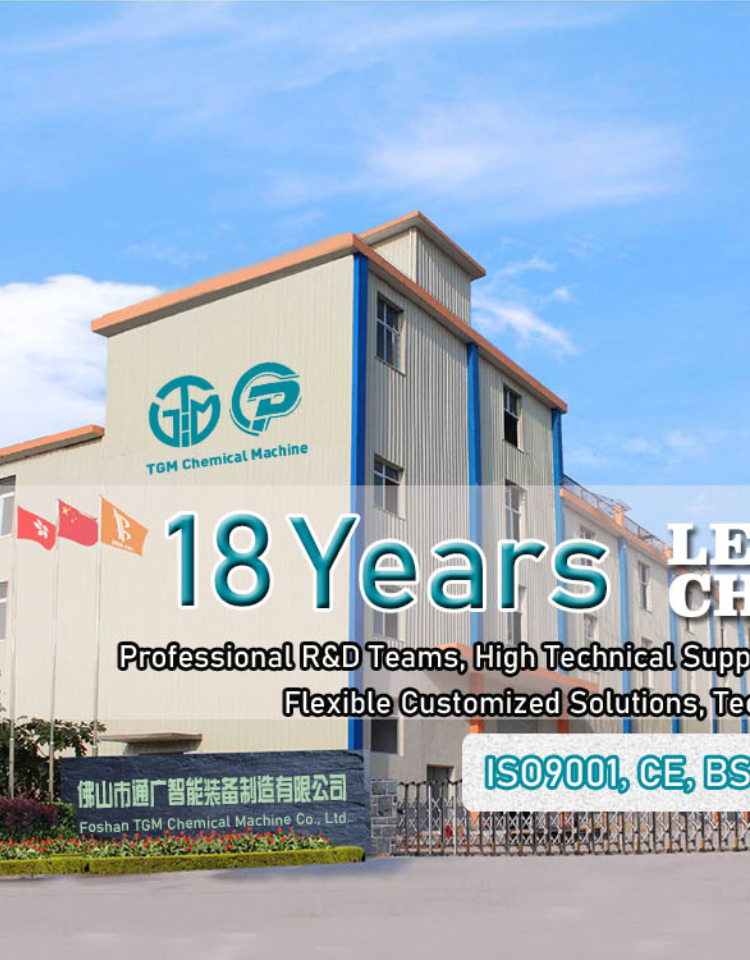Email cannot be empty
Password cannot be empty
Email format error
Email cannot be empty
Email already exists
6-20 characters(letters plus numbers only)
The password is inconsistent
Email format error
Email cannot be empty
Email does not exist
6-20 characters(letters plus numbers only)
The password is inconsistent


Thermoplastic Polyurethane (TPU) Hot Melt Adhesive Production Line: A Complete Guide
Introduction
Thermoplastic Polyurethane (TPU) hot melt adhesives are widely used in industries such as textiles, footwear, automotive, and electronics due to their excellent flexibility, adhesion, and heat resistance. Unlike traditional adhesives, TPU hot melts are solvent-free, making them an eco-friendly choice.
In this blog, we will explore the TPU hot melt adhesive production line, covering raw materials, manufacturing processes, key equipment, and applications.
1. Raw Materials for TPU Hot Melt Adhesives
The primary components used in TPU hot melt production include:
-
Polyols (e.g., polyester or polyether polyols) – Provide flexibility and adhesion.
-
Diisocyanates (e.g., MDI, TDI) – React with polyols to form urethane linkages.
-
Chain extenders (e.g., 1,4-butanediol) – Enhance mechanical properties.
-
Additives (e.g., antioxidants, UV stabilizers, tackifiers) – Improve performance.
2. TPU Hot Melt Adhesive Production Process
The manufacturing process typically involves polymerization, extrusion, pelletizing, and packaging.
A. Prepolymer Formation (Reaction Stage)
-
Polyols and diisocyanates are mixed in a reactor under controlled temperature (80–120°C).
-
The reaction forms a prepolymer, which is then combined with chain extenders.
-
The mixture undergoes chain extension to achieve the desired molecular weight.
B. Extrusion & Pelletizing
-
The molten TPU is fed into a twin-screw extruder for homogenization.
-
Additives (e.g., tackifiers, stabilizers) are blended in this stage.
-
The extruded material is cooled and cut into granules or pellets for easy handling.
C. Quality Control & Packaging
-
The pellets are tested for melt flow index (MFI), viscosity, and adhesion strength.
-
Final products are packed in moisture-proof bags or bulk containers.
3. Key Equipment in a TPU Hot Melt Production Line
-
Reactor (Stainless steel, with temperature & pressure control)
-
Twin-screw extruder (For melting, mixing, and homogenization)
-
Pelletizing system (Strand pelletizer or underwater cutting)
-
Cooling & drying unit (To prevent moisture absorption)
-
Packaging machine (Automatic weighing & sealing)
4. Quality Control & Testing
To ensure high performance, TPU hot melt adhesives undergo:
-
Melt Flow Index (MFI) Test (ASTM D1238)
-
Peel Strength & Tack Test (ASTM D903, ASTM D2979)
-
Thermal Stability Test (TGA/DSC analysis)
-
Viscosity Measurement (Brookfield viscometer)
5. Applications of TPU Hot Melt Adhesives
✅ Footwear Manufacturing (Bonding soles, insoles)
✅ Textile Lamination (Waterproof fabrics, sportswear)
✅ Automotive Interiors (Dashboard panels, door seals)
✅ Electronics (Flexible circuit bonding)
✅ Packaging (High-strength sealing)
6. Advantages of TPU Hot Melt Adhesives
✔ No solvents – Eco-friendly and safe for workers.
✔ Fast curing – High production efficiency.
✔ Excellent elasticity & durability – Resistant to wear and chemicals.
✔ Good adhesion – Bonds well with plastics, metals, and textiles.
Conclusion
The TPU hot melt adhesive production line involves precise polymerization, extrusion, and pelletizing to create high-performance adhesives. With growing demand in sustainable and high-strength bonding applications, TPU hot melts are becoming a preferred choice in multiple industries.
If you are interested in TPU hot melt adhesive production line,feel free to tell us.

